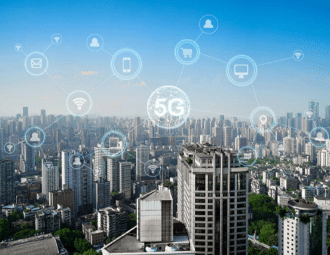6G Network: The Future of Wireless Network Technologies
March 23, 2022

Since the Second-Generation Networks (2G) launch in Finland in 1991, mobile phone network technology has been advancing faster. It has changed the way people interact with each other and the world.
In 2019, the journey of rolling out 5G was launched and started hitting the mainstream fast to replace the aging 4G standard in more than 58 countries as of June 2021. The race to replace 5G with 6G wireless networks has already started and is expected to be operational in 2030. The 6G network is expected to outshine its predecessors in speed and bandwidth, with much lower latencies.
The 6G networks are likely to support complex applications beyond the current 5g networks, such as augmented and virtual reality (AR/VR) and the Internet of Things (IoT). The speculations show that the mobile network operators are likely to adopt very flexible and decentralized models for 6G, with spectrum sharing, infrastructure sharing, and local spectrum sharing.
The models are designed to be handled by intelligent automated management, which will be underpinned by short-packet communication, mobile edge computing and blockchain technologies.
The Future of 6G Technologies
The 6G network is in its early stages of development. There is very little factual information on its capabilities or technologies. Although telecoms still rely on 4G for consumer use, they are enthusiasts of these decentralized and flexible business models.
According to a paper from Virginia Tech, in 2019, mobile network engineers describe the 6G wireless networks as a fully integrated system that will provide instant communication between devices, vehicles, users and the immediate environment. How will it feel going from the Internet of Things to the Internet of Everything?
Technological experts believe that this network will reach a speed of around 1Tbps, almost a thousand times faster compared to the current 1Gbps supplied by the fiber optic packages. In 2019, the Federal Communications Commission (FCC) allowed companies to prospect the speed of 6G with terahertz waves, commonly known as sub-millimeter waves. The waves ranged between 95 GHz to about 3 THz spectrums.
The speed was compared to 5G, which utilizes high-band, mid-band, low-band microwave, and millimeter-wave technologies to achieve an approximately 4 GHz frequency range. Although terahertz waves will boost 6G speed to reach 1Tbps, experts believe it would suffer a similar speed limitation as 5G due to its limited range and largely depends on “line-of-sight” between the end-user and the transmitter.
Thanks to the University of California, Santa Barbara Engineers, who designed a device using N-polar gallium nitride high-electron-mobility transistors (HEMTs) to boost the speed of 6G. The device incorporates a junction between materials with entirely different band gaps. The HEMTs significantly increase the device’s frequencies (up to 230 THz), which is suitable for 6G networks.
In 2020, another group of engineers from the Osaka University of Japan and Nanyang Technological University of Singapore also designed a Chip that could be used in terahertz waves that could be utilized for 6G. Early 2020, the Millimeter Wave Products engineers developed an amplifier for G-bands that could also operate in the terahertz waves.
These discoveries, among others, have been put in place to facilitate the movement of the 6G beyond the early developmental stage and enhance fruition. Given the slow 5G rollout, it is likely to take the whole decade before 6G wireless networks become a reality.
Our Position
At this early developmental stage, it is not easy to tell all the capabilities of 6G networks. But with the previously deployed standards and numerous technological contributions, its impact might be huge. Drones, autonomous vehicles, AI, and smart factories have gained much traction since the launch of 5G. We feel that 6G will advance current applications and speed to boost technology.
Telecom is open to talents that could help them navigate the developmental process faster and more effectively. If you are interested in a job in the telecommunications industry, please check out our open jobs!






























